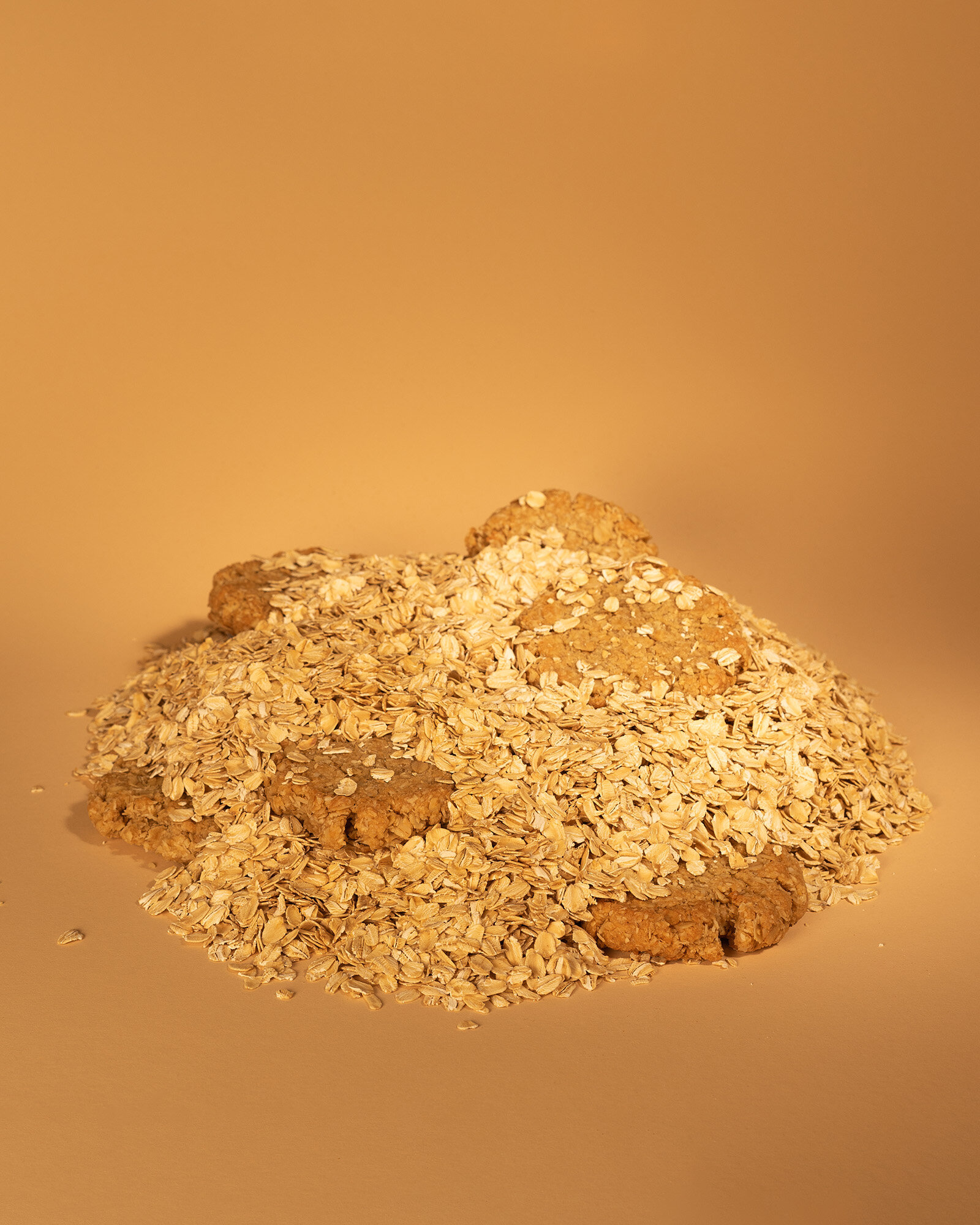A SANDWICH, FEW BISCUITS, A CAKE, SOME MAGIC AND ELEVEN HERBS AND SPICES: SOME FOOD AND ITS MYTHOLOGY
Any smart dating advice will tell you to: one, carefully curate the pictures on your Tinder profile, and two, make sure to grab the attention with a cute bio. Food works much the same. Some recipes you read you want to try out because they appeal to your taste buds, others because they have some interesting baggage. They can carry the weight of history, can be the 〜fun〜 in the fun fact, be mysterious or weird — but they always tell a story. These are five short tales of how some food came about, how it travelled and made its way into our mouths and hearts. They are not necessarily related and don’t disclose a bigger picture. Instead, they are mere puzzle pieces in this great big work of human imagination we call food.
A VETERANS’ AFFAIR: ANZAC BISCUITS
The word ‘anzac’ is short for Australian and New Zealand Army Corps, but the rest of the world more likely knows the acronym from the namesake biscuits. This biscuit, sometimes controversially referred to as a cookie, gets its flavour and texture from rolled oats, golden syrup and desiccated coconut. While the origin of the recipe is somewhat unclear — some believe they were sent to soldiers at the front during World War I, while others say they were sold at home to raise money for the troops — it is now guarded like a treasure. Although Australians and Kiwis are known to fight over who invented what (the pavlova-issue is yet to be resolved), they proudly share these biscuits. The word anzac is protected and therefore can’t just be used by anyone, with the exception being the anzac biscuit, under the condition that it’s never referred to as a cookie and stays close to the original recipe. This caused the American fast-food chain Subway to get in trouble with the Department of Veterans’ Affairs in the 2000s after trying to sell cookies too different from the recipe under the anzac name. Defeated, embarrassed even, Subway dropped the cookies off the menu.
WE’RE ALL ONE: HERMAN, THE CHAIN LETTER SOURDOUGH
There are a number of ways in which recipes are generally distributed: through cookbooks, newspapers and magazines, television shows, through word of mouth or a copy made by a friend or relative. One generally knows where a recipe came from. Not so with Herman, a cake that by all accounts gained popularity in the nineteen-seventies, but whose origin remains disputed until today. Herman follows the principle of a chain letter: One receives a photocopied recipe alongside a kind of sourdough starter, which one is supposed to feed and take care of for nine days. On the tenth day, the now significantly bigger and more bubbly starter is divided into five — one part of which is used to bake a cake, one more to save for later, and three others are given away. If everyone follows the instructions, the starter spreads across the globe rather quickly in an exponential manner. That is exactly what happened in the seventies and eighties in Europe. Together with the trend then died countless starters, but not forever. The sourdough trend of the last few years was hard to miss, and so back came Herman, albeit not at the level of success it had in earlier decades. However, the coronavirus pandemic and subsequent isolation again created fertile ground for a fad like this to spread at full speed: A lack of social interaction, empty yeast shelves in supermarkets and time on hand made Herman everyone’s friend once again.
A ROYAL RECIPE: THE KING’S FAVOURITE SANDWICH
“The nights he spent at home he spent feverishly talking till dawn with Gladys about this other world (...) while ceaselessly wolfing down the mashed bananas, peanut butter, and bacon sandwiches she made him.” In 1985, Elaine Dundy released Elvis and Gladys, a biography of the King focussing on his relationship with his mother. The repeated mentions of that fried peanut butter, banana and bacon sandwich set off an increased interest, not in the man or the music, but in his diet. Multiple books and accounts of the King’s favourite food can now be found. The trend reached its peak in 1992, with the publication of both the cleverly titled Are You Hungry Tonight? and Fit for a King: The Elvis Presley Cookbook. One recipe makes the cut in every Elvis inspired cookbook, and it’s that sandwich. Admittedly, some parts of it are up for discussion: Does it have bacon or not? Should the banana be mashed or sliced? But the gist is always the same: golden brown fried bread, oozing peanut butter, sweet and delicate banana. You don’t have to be a king to see how much sense that makes.
BACK-OF-THE-BOX MARKETING: DR. OETKER’S CAKES AND COOKIES
Dr. August Oetker was a trained pharmacist from a German baker's family who never forgot his roots, and above all else a very savvy businessman. Early products coming from his laboratory ranged from ‘health cocoa’ to wart cream, while later business ventures completely steered away from medicine and into the kitchen. One of his first and most famous products was baking powder, which he, without a doubt, did not invent himself. He did, however, patent and popularise the product in Europe in the late nineteenth century under the name Backin — one of Germany’s first branded products. His baking powder, in contrast to earlier versions, had a long shelf life and was marketed towards home bakers. Back then, baking powder seemed more alchemy than chemistry: No longer did bakers have to rely on ever-fickle, expensive yeast or endless hand-whipping of egg whites and cream to get some rise into their baked goods. Magic! In 1902, Dr. Oetker introduced the signature ten-gram-sachets, enough for 500 grams of flour, and began printing recipes on the back. This early type of content marketing was further built upon in many Dr. Oetker cookbooks, invariably using the company’s products — a marketing trick now commonplace in the food industry. His doctor title helped the company gain a trustworthy, scientific and ‘doctor approved’ reputation.
THE TRADE SECRET: COLONEL SANDERS’ ELEVEN HERBS AND SPICES
Arguably the most famous secret recipe in the world is the mix of eleven herbs and spices that is rubbed onto thousands of kilos of chicken parts every day around the world. KFC has been able to keep this mix a secret since the nineteen-thirties: a real tour de force. Since recipes are not protected by copyrights, nor is a spice mix innovative enough to be patented, keeping the formula a secret is the only way of protecting it — other famous American heritage brands such as Coca-Cola and Tabasco took the same route. It is said the original, handwritten recipe — signed by the Colonel himself — is kept in a safe in KFC’s Louisville, U.S.A headquarters. Production takes place in two steps: Griffith Laboratories mix the first half, which it is transported to the factories of McCormick, where the latter half is added. No one knows which company is in charge of the herbs, and who adds the spices. In 2016, the Chicago Tribune reported that Joe Ledington, the Colonel’s nephew by marriage, had discovered a little handwritten note with, you guessed it, eleven herbs and spices on it — to be mixed with 2 cups of flour. While it is widely disputed if this actually is the recipe (some say the paper isn’t nearly yellow enough to be that old), it’s the closest thing chicken fans have. And the closest the Colonel has ever come to losing his little secret.
Text and Food: Yannic Moeken
Copy Editing: Charlotte Faltas
Photography: Junshen Wu
Creative Production: Sandra von Mayer-Myrtenhain

















